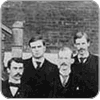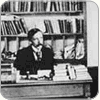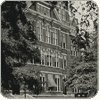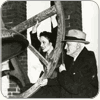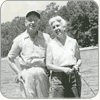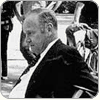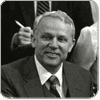A Brief History of Auburn University
Brief narrative chapters recount the history of Auburn University from its establishment in (as East Alabama Male College) in 1856 through the Roaring Twenties, the Great Depression, World War II and the time period covered by Auburn University presidents Ralph Draughon, Harry Philpott and Hanly Funderburk. Early chapters contain links to the relevant editions of the Auburn yearbook, the Glomerata.
The Old South: 1856-1872 In November, 1859, East Alabama Male College student B.C. Lee wrote his mother with news of the previous semester at school and his encounter with the local population:
The inhabitants of this place are very sociable, & friendly, perhaps more so now, than they will be several years from hence, for this being a new college every one is exerting himself to give it name and reputation. And the students therefore, are treated with the greatest courtesy, & are warmly received into the families of Auburn. The citizens take a great pride in introducing a young man, & endeavor to make him feel at home – as though he were thrown among those in whom he could confide, & with whom he could spend his leisure moments pleasantly…I think after becoming familiar with the place, that it is indeed an excellent place for a college.
read more...
The New South: 1872-1900 Between the years 1872 and 1900, the Agricultural & Mechanical College of Alabama gradually emerged as a leading institution for the scientific study of agriculture and mechanical sciences. Like many land-grant colleges, AMCA faced an uphill battle in its efforts to carve out a niche for itself.
read more...
The Progressive Era: 1902-1919 Shortly before API President William Leroy Broun’s death in 1902, the United States Congress considered a bill to establish mining engineering programs at all the nation’s land-grant colleges. The Association of Land-Grant Colleges supported the measure, but universities in ten states opposed it, among them the University of Alabama. These schools sought to amend the bill either to acquire a portion of the appropriation directly or to divert a portion to their state legislature. The board of trustees sent professor Charles C. Thach to Washington to negotiate a compromise with the representative from the University of Alabama, by which the funds for the state would be divided equally between the two schools. Following Broun’s death, the board elected Thach, an API graduate who had spent his entire career at the school, to succeed to the president’s office.
read more...
The Roaring Twenties and The Crash: 1919-1932: The thirteen years between 1919 and 1932 may have been the most turbulent in the history of the Alabama Polytechnic Institute. They began with the controversial resignation of a long-term, popular president and the appointment of a successor who never enjoyed the full support of the college community. During these troubled years, API experienced a series of unsuccessful football seasons, an attempt to move the school from Auburn to Montgomery, the forced resignation of one president, political warfare with the University of Alabama, and charges of unethical behavior against the Cooperative Extension Service. Controversy turned to crisis at the end of these years with the onset of the Great Depression and with shortfalls in state revenues that crippled the college and hastened the downfall of another president who simply lacked the resources to cope with the financial emergency.
read more...
The Depression and World War II: 1933-1946: Following Bradford Knapp's resignation, the business and professional people of Auburn asked Governor B.M. Miller to appoint Luther N. Duncan, director of the Extension Service, interim president. They cited his financial acumen, his knowledge of the college and the state, and his political and diplomatic skills as qualifications. In a statement mailed to alumni, Duncan replied that he was not an applicant, for the job should seek the man. He just wanted to serve Auburn in the best possible way.
read more...
Ralph Draughon's Presidency: 1947-1965: Luther Duncan’s death on July 27, 1947, left Alabama Polytechnic Institute without a president. The following day the board appointed as acting president its executive secretary, Ralph Draughon, then elected him to the full office in October 1948. His tenure laid the foundation for the complex institution Auburn University is today.
read more...
Harry Philpott's Presidency: 1965-1980: Harry Philpott became president of Auburn after serving as academic vice president at the University of Florida. With a background that included stints as a religion professor and head of a religion and philosophy department, Philpott had worked his way up through academia.
read more...
Hanly Funderburk's Presidency: 1980-1983: Hanly Funderburk became president after a highly politicized search in which Governor Fob James disagreed with some trustees and faculty members over the final choice for the position. The search process and financial difficulties faced by Auburn in the early '80s, as well as his management style, made Funderburk’s years as president difficult.
read more...



